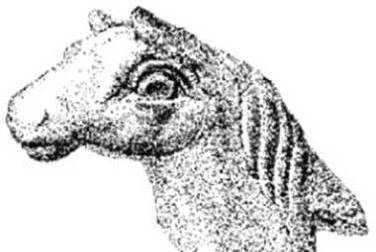Olga ADYGOVA, Senior Researcher at the Institute of History and Archaeology of the Academy of Sciences of Turkmenistan
Turkmenistan is a country with a centuries-old history, ancient traditions and heritage – it is a treasure trove of cultural riches. One of them is the selection of Akhal-Teke horses, which dates back thousands of years. The cult of the horse is considered one of the most ancient. The image of a horse in the minds of many Eastern peoples was considered a heavenly deity, associated primarily with the sun – the god of light and warmth. The Parthians worshiped it, and the ancient Turks endowed it with the gift of speech and flight.
Archaeological research provides Turkmen scientists with interesting facts for studying the history of the evolution of the ancient Akhal-Teke horse breed. Thus, in the collection of terracotta figurines from Kara-Depe (the most significant monument of the Anau culture) – a monument dating back to the 4th millennium BC, an interesting statuette was discovered. The presence of a mane and a lush tail allowed archaeologists to assume that this was a horse.
In Southern Turkmenistan, at the sites of Namazga-depe, Altyn-depe, and in the proto-city of Gonur-depe, many terracotta models of two-axle and one-axle chariots were also discovered, dating back to the end of the 6th–2nd millennia BC (the supposed time of horse domestication). Among them, models of carts with spokes stand out. It was precisely these chariots that the ancestors of modern Akhal-Teke horses harnessed during festivities.
The world-famous archaeologist V.I. Sarianidi noted in his work “Ancient Eastern Kingdom in the Old Delta of the Murghab River” that in one of the rich burials of the Gonur necropolis, a miniature bronze sculpture in the form of a horse’s head with a long neck, alertly raised ears and large eyes like those of an Akhal-Teke horse was found. This absolutely unique piece, only 7 centimeters long, was the top of a wooden staff, which, of course, rotted away over thousands of years of being in the ground. Therefore, there is every reason to believe that at least at the turn of the 3rd–2nd millennia BC, i.e. over 4,000 thousand years ago, the ancient Turkmen tribes were already familiar with horse breeding and bred domestic horses on their farms.
During excavations of Old Merv in Gyaur-Kala in 1969, a 10 cm long horse figurine was discovered, painted with black paint or ink, but the head and limbs were broken off. Almost all horse figurines from Merv in the first centuries AD had riders, who were made separately using a stamp and then attached to the horse before firing.
In ancient times, the Turkmen plains along the northern slope of the Kopetdag (along with Media and Armenia) were considered one of the main areas for breeding thoroughbred horses, which made the Parthian cavalry famous. It was here that those stately, large, fast-paced horses with the ability to run long distances were bred, which so amazed the Romans. One of the ancient written sources mentions a Parthian horse that fell into the hands of the Roman Emperor Marcus Aurelius Probus, which could run 100 milliarii a day (about 150 km) for 8-10 days.
The breed of “Nisei” horses, bred through the labor and efforts of ancient horse breeders, preserved for centuries by many generations of the Turkmen people, of course, did not remain unchanged over time. Improving over the centuries, the pure blood of the legendary Akhal-Teke horses gave rise to such varieties of the breed as the English riding horse, Arabian thoroughbred, Dutch warmblood, Holstein, and Hanoverian. “The horses of Nisei surpass all in their beauty. These horses, worthy of powerful kings, beautiful in appearance, easily obeying the bit,” wrote the ancient Roman historian Appian. By the way, the name “Nisei” is associated with the ancient city of Nisa, which was the capital of Parthia. In Parthia, since ancient times, only Akhal-Teke horses were bred. Consequently, “Nisei” horses are the now famous Akhal-Teke breed.
The horse, which played such an important role in the economic life of the Turkmen people, the horse – the bearer of glory and strength of the Parthian army, which ensured the political power of Parthia on the world stage, has long been revered by all Turkic-speaking peoples. “He who honors the horse, lives in prosperity,” say the Turkmens, noting their important role. Therefore, the love of the Turkmen for the Akhal-Teke horses was sung in folk epics, legends, tales, poems, proverbs and sayings are dedicated to them. The classics of Turkmen literature Makhtumkuli, Magrupi, Seydi, Myataji dedicated poetic lines to them.
From ancient times to the present day, the Akhal-Teke horse, thanks to its exceptional natural qualities and the talent of national breeders, continues to occupy a special place in the traditional culture of the Turkmen. /// nCa, 2 October 2024 (cross post from Neutral Turkmenistan)
